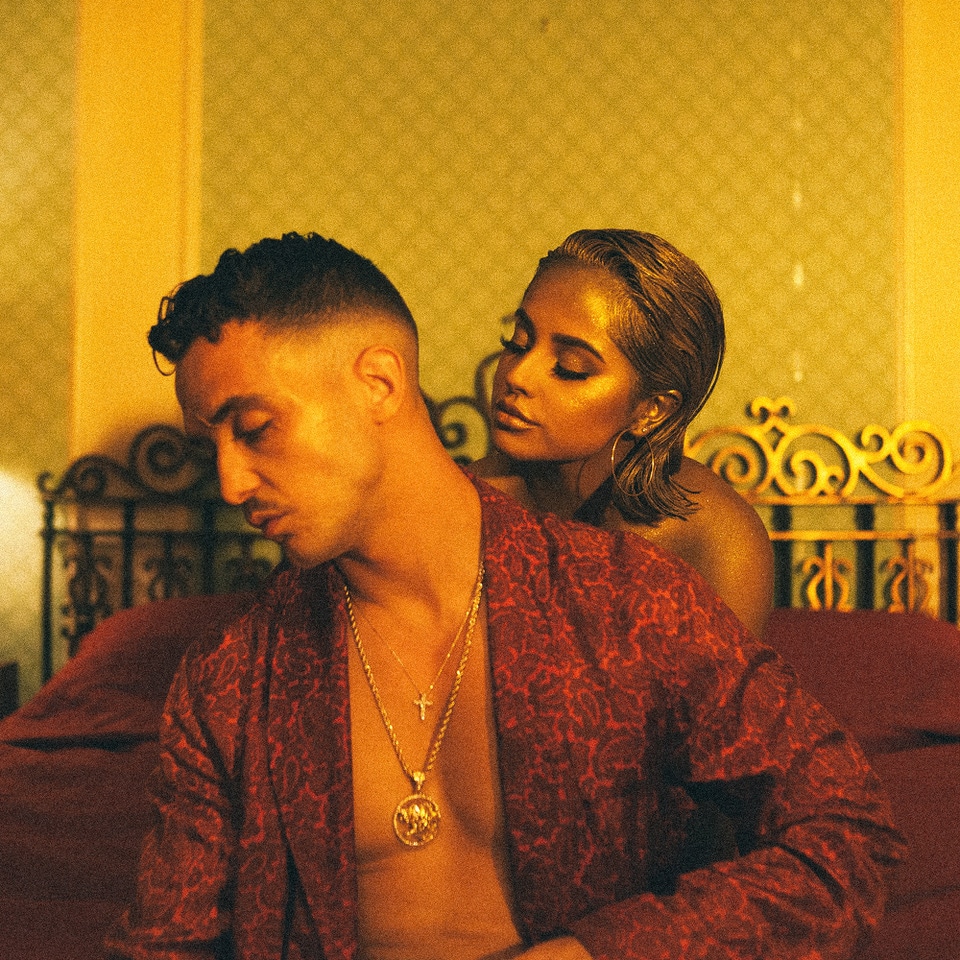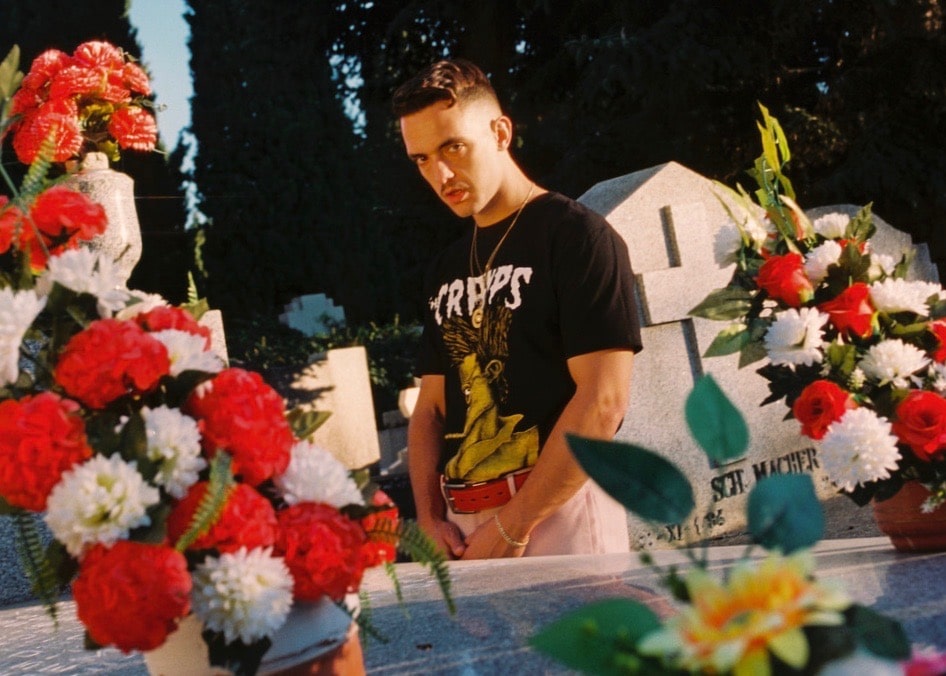To tell the tale of C. Tangana in 2018, you might start with a tidy media loopback he closed out earlier this year. The Spanish rapper took on critiques of his rise up the charts and made it the focus of his work via an April mixtape called Avida Dollars. The project was named after André Breton’s disparaging moniker for his more commercially successful Surrealist peer Salvador Dalí. On the tape, Pucho’s lyrics swung through self-deprecating but ultimately self-vindicating narratives, the joke striking gold when Avida Dollars became one of the most streamed albums in Spain. Fans, haters — it seems like everyone is listening to Tangana in 2018, whether they like it or not.
At an August interview with Remezcla during a trip to New York, the Spanish emcee seems happy with the course of his career back home. But it’s not enough. Tangana wants more; more tour dates abroad, more streams overseas, more collaborations with artists from the other corners of the música urbana universe. Early 2018 single “Traicionero” served as a signpost for this global strategy; veteran Dominican dembow producer Cromo X spun out the breakneck track, a teaser for a more club-oriented body of work on which Tangana is collaborating with Mexico City electronic collective NAAFI.
But who knew that the racer of a track forecasted a Becky G collab? October’s “Booty” has certain sonic consistencies with “Traicionero” — namely their echoing Caribbean beats. But his duet with the high wattage reggaeton pop princess (whose star shine has led the video to over 11 million views within the first five days of it being released) may be a signal that the urban industry has taken Tangana into the fold.
That being said, it seems that the prospect of global stardom hovering above his head has not caused the rapper to forget the home team. “You know what’s happening in Spain?” he asks. “It’s got a really beautiful variety. Della[fuente], Yung Beef, Bad Gyal, they do their thing and aren’t trying to look like anything else that’s happening right now. Other countries, they’re always following trends. Bad Bunny gets popular and there’s people doing Bad Bunny’s style, or J. Balvin’s.”

It was nice of him to say. The madrileño emcee doesn’t spend much time gassing up his national competition — a posture best characterized by the much-hyped tiradera he flung at Yung Beef months ago. Perhaps the digs were just show biz. Tangana says that despite any animosity generated by the public back and forth that ensued, professional camaraderie remains between himself and the Pxxr Gvng performer. “It’s like [Spanish footballer rivals Andrés] Iniesta and Sergio Ramos,” says Tangana. “They fight, but in the moment of truth when they have to play outside the country, they play hand in hand.”
Why focus on local rivalries when you have international working relationships to foster? Tangana linked with Cromo X after hearing Spanish producer El Guincho play a choice track by the DR beatmaker. Studio time logged, the duo shot an accelerated video to match the track on Tangana’s trip to the island, a journey that left the Spanish rapper impressed by the depth and variety of the Dominican dembow scene. “No one has a tradition of that size,” says Tangana, who says he is an especial fan of emcees El Alfa and Lirico En La Casa. “I fell in love, to tell the truth.” He also came away from the visit with a newfound respect for the support that Dominicans offered their local talent. “Wednesday to Sunday, every day there’s a different show in every club, there’s thousands of artists in the urban scene. That blew my mind.”
The impact of different club cultures gave the rapper an idea of new places to take his music. Of the future fruits of the partnership with NAAFI, Tangana says, “It’s not going to be your standard club music that everybody else is making. It’ll be darker, harder.” Right now the team is in the process of developing a handful of tracks that Tangana says may be released as singles, or coalesce into an EP. Perhaps on the smaller label, Tangana has the freedom to explore sounds that might not have fit into the oeuvre of his more mainstream releases via Sony.
Pucho clearly appreciates the flexibility in collaborating with a smaller label, though big budget support has allowed him to create some of the iconic, high-budget music video imagery. There’s the cinema of “Bien Duro”’s tortured love story — not to mention the freak show proclivities of recent clips like “Booty” (Tangana in fake facial scar and milky white eyeball, sharing screen time with snaggle-toothed, leery twins) and “Cuando Me Miras” (Tangana with long-stemmed roses piercing his neck, appearing alongside a female bodybuilder.) “The pros of a big label is that you have the capacity to do it all,” he says. “If you have an ambitious project, if you want to make videos, if you want to travel, work with heavy engineers, all that? They can make it happen. The cons are the bureaucracy, that whole process. You have to do politics.”
One aspect that Tangana is not looking to change is his close working relationship with Barcelona producer Christian Quirante a.k.a. Alizzz, who has often been credited with helping to create the rapper’s blend of trap and urbano influences. “He designs my sound, and is one of the people who is totally changing music in Spain,” says Tangana, who calls Alizzz “the best producer in Spain right now.” The rapper says the two have shared a musical journey, learning together how to streamline a vision that Tangana says once qualified as “Baroque.” That quest to evolve a sound already proven to be a moneymaker may prove to be key to Tangana’s future growth potential in a rapidly evolving music industry.







